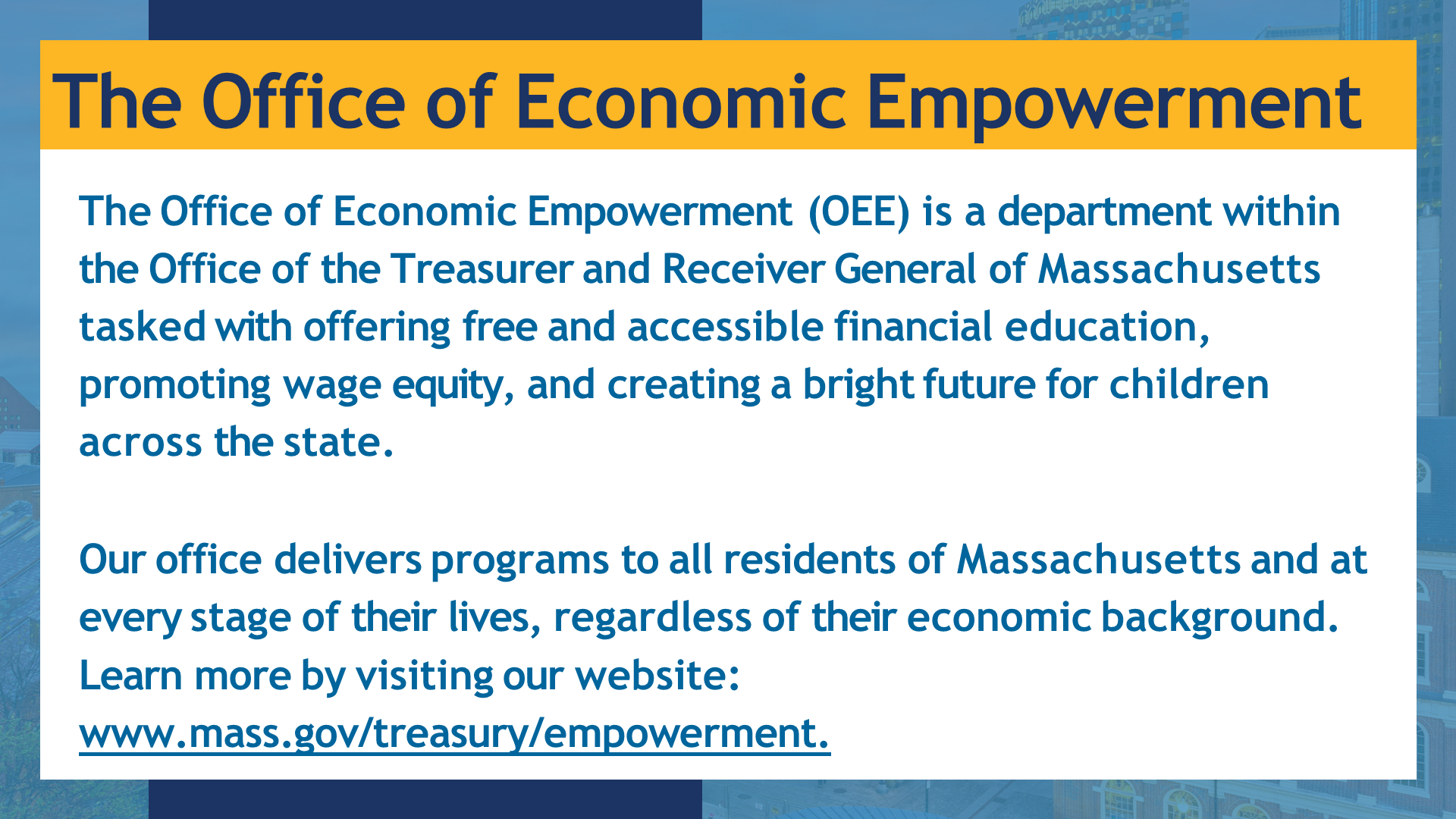Racial Wealth Equity Research and Conversation Series: Baby Bonds
December 11, 2023
“Wealth is not only essential as a financial cushion, but it also influences where people live and work, what kinds of schools they go to, and what kinds of opportunities to which they have access.”
Lee Pelton, President and CEO of the Boston Foundation, opened the webinar Racial Wealth Equity Conversation and Research Series: Baby Bonds by highlighting the importance and impact of the racial wealth gap on housing, education, and job opportunities. That impact is all too real in Massachusetts, where the racial wealth gap is three times larger than the racial income gap—and is the largest racial wealth gap in the nation.
The December 11 webinar was the third event in the Racial Wealth Equity Research and Conversation series, created by Boston Indicators in partnership with the Federal Reserve Bank of Boston. Here the conversation moved from the causes of racial wealth inequity to practical solutions. “Baby Bonds,” government-funded savings accounts usually established for an individual at birth, serve as a financial resource that grows over time, enabling the bondholders to build generational wealth and greater economic security.
After Pelton’s welcome, Dr. Darrick Hamilton, Founding Director of the Institute on Race, Power, and Political Economy at The New School in New York City, laid out his vision for a future economy that is able “to promote our productive capabilities.” He continued, “It should also advance a tranquil environment and human flourishing. It should facilitate people, all people, to be self-determining in righteous ways.”
Hamilton critiqued the assumption that wealth disparity is largely due to poor choices, arguing that the main cause of poverty is insufficient resources to attain wealth. Baby Bonds address this by providing a universal economic birthright that begins to address the root cause of poverty.
Hamilton said, “Poverty and inequality are the result of policy choices that deny people the necessary resources they need to live meaningful lives.”
Alayna Van Tassel, Deputy Treasurer and Executive Director of the Office of Economic Empowerment at the Massachusetts Treasury, grounded her presentation by noting the Color of Wealth study, the 2015 report that found a median net worth for Black families in Boston of $8 compared with nearly $250,000 for White families.

Agenda
Welcome & Opening Remarks
Lee Pelton, President & CEO, the Boston Foundation
Presentation
Dr. Darrick Hamilton, Founding Director, Institute on Race, Power, and Political Economy, The New School
Panel Discussion and Q&A
Erick Russell, Treasurer, State of Connecticut
Alayna Van Tassel, Deputy Treasurer and Executive Director, Office of Economic Empowerment, Massachusetts Treasury
Dr. Darrick Hamilton, Founding Director, Institute on Race, Power, and Political Economy, The New School
Kelly Harrington, Senior Research Manager, Boston Indicators (Moderator)
Motivated by this gap and initiatives in other states, Massachusetts has been developing its own Baby Bonds policy. The proposal qualifies children under the age of one year who are in the Transitional Aid to Families with Dependent Children (TAFDC) program, as well as children in the foster care system, to receive Baby Bonds. The roughly 10,000 eligible children would be automatically enrolled in the program at birth and could withdraw funds at any time between ages 18 and 35, to be used for investments in education, businesses, and housing.
Erick Russell, Connecticut State Treasurer, spoke about the challenges and achievements in implementing the Connecticut Baby Bonds program. Initiated in 2021, the program faced many challenges but after collaborative efforts, was established and became fully funded as of July 1, 2022. Connecticut's Baby Bonds program invests $3,200 in each child born into poverty, with eligibility determined by the state's Medicaid program. Similar to the proposed Massachusetts program, participants can access these funds between ages 18 and 30 for home purchases, business investments, education, or retirement savings.
The program, which anticipates serving approximately 15,000 eligible children annually, has been fully funded for the next 12 years, eliminating the need for ongoing legislative approval.
Kelly Harrington, Senior Research Manager at Boston Indicators, then brought together the three presenters for a panel discussion, which she opened by asking Hamilton to expand upon his often-used phrase “wealth begets more wealth.”
He explained how wealth disparities are rarely influenced by an individual’s efforts and behaviors, but have more to do with that individual’s access to capital. “It is often the case that Black families where the head graduated from college have less wealth than White families where the head dropped out of high school. To me, that data point in and of itself points toward something that is beyond individual effort and behavior, but rather grounded in capital.… It is capital that puts people into a vehicle that will provide automatic savings so that they can accumulate wealth.”
Harrington then asked Van Tassel if the proposed Baby Bonds would address an issue with Massachusetts’ current opt-in Baby Steps savings program, which data show is more likely to be used by White families than by others. Van Tassel acknowledged this issue, and noted that unlike Baby Steps, enrollment in the new Baby Bonds plan would be automatic for qualifying children. She also highlighted the need for active efforts to reach out to historically underrepresented communities for enrollment.
Treasurer Russell joined the conversation and emphasized the opportunities of programs such as Connecticut Baby Bonds to shift the relationship between people and government. “[For] a lot of underrepresented communities and folks living in poverty, [and] people of color, you have to keep in mind that their interaction with government is often not positive… so being able to engage with communities in a very positive way also creates this opportunity to connect people with other resources and other programs in a way where people are more trusting and open and willing to interact.”
